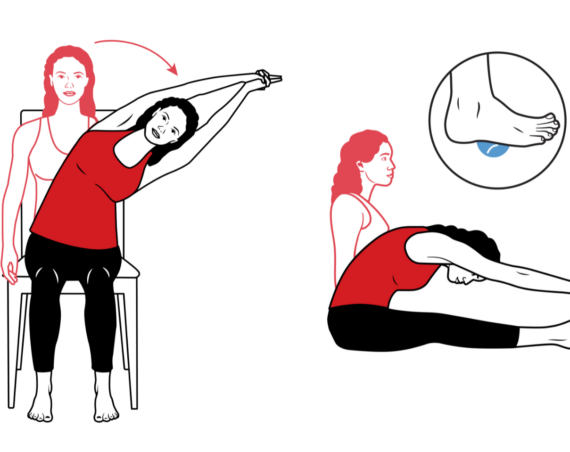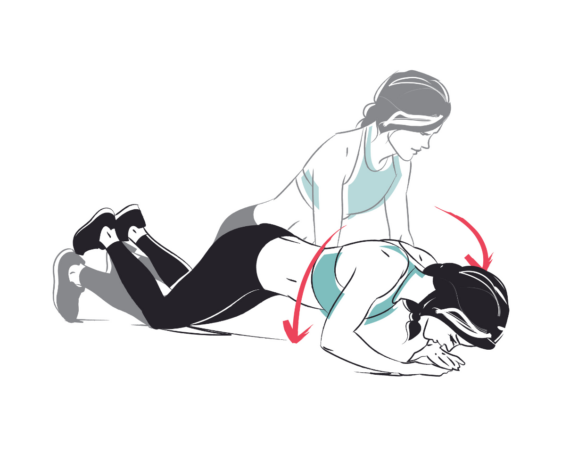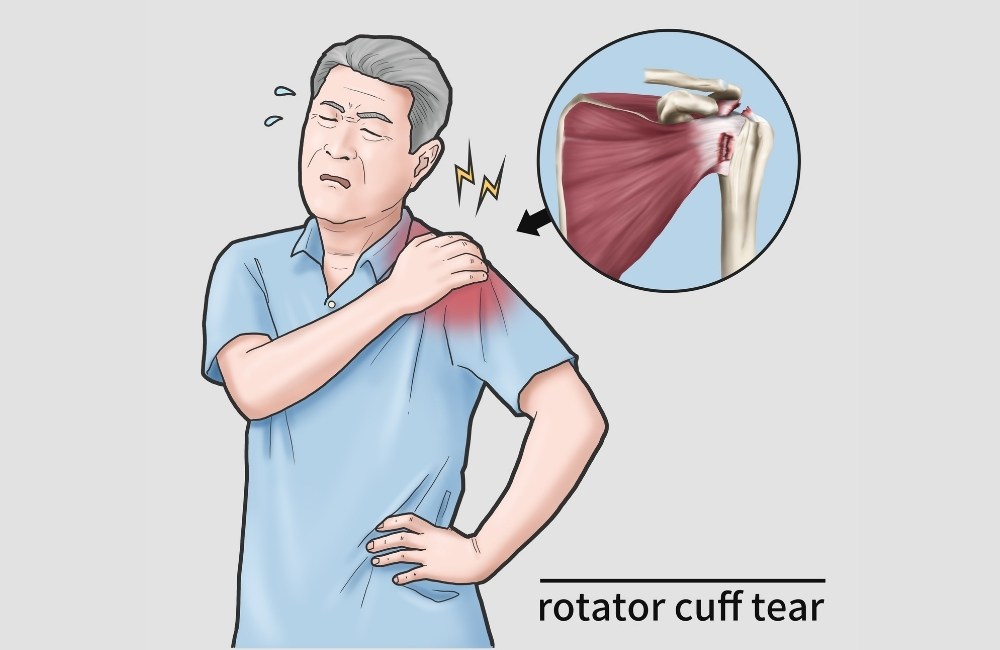
Shoulder injuries can be devastatingly painful and slow to heal.
The rotator cuff is made up of four muscles. Together they stabilize and mobilize the shoulders.
Injuring your shoulders or strain on the muscles and joints can not only limit your activities but also be painful.
Physical therapist Bennett Richardson shares 5 rotator cuff exercises to keep your shoulders healthy and injury-free.
You may also like:
10 Exercises To Strengthen Your Core and End Lower Back Pain
A PT Shares the 7 Stretches He Does Every Day To Keep His Body ‘Young and Healthy’
Shoulder Muscles and Joints
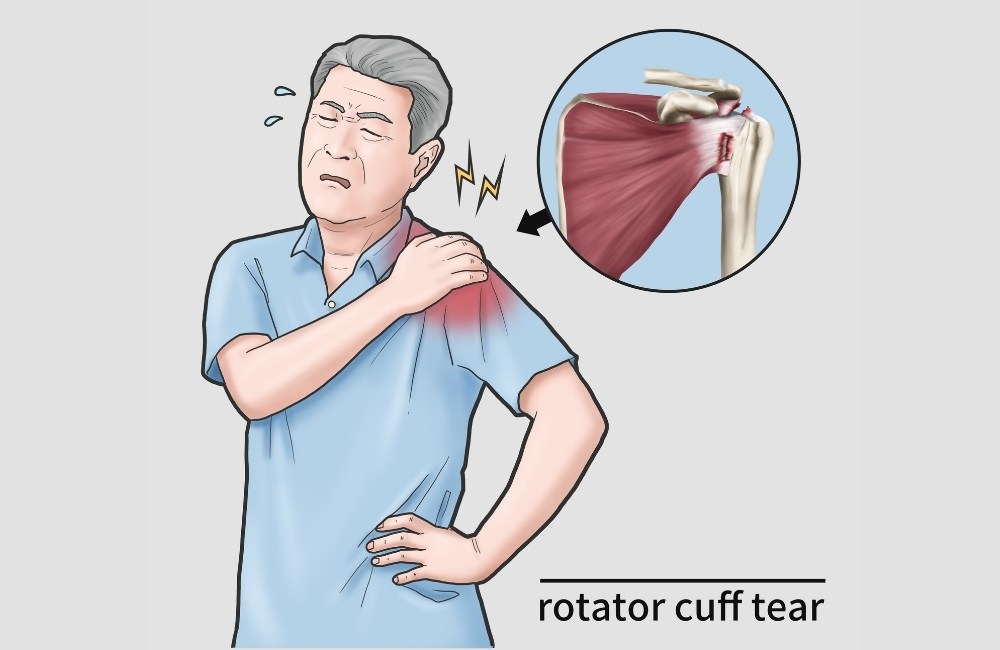
The shoulder is a very complex and very mobile joint. Additionally, we use our shoulders for nearly every task we accomplish on a daily basis. For this reason, shoulder injuries are extremely common and often completely debilitating.
One particular area of the shoulder that causes significant issues for many people is the rotator cuff.
In this article, I will review some basic concepts regarding shoulder health in general and the rotator cuff in particular. Then, I will outline some of the best exercises to keep this joint as healthy as possible.
Rotator Cuff Basics
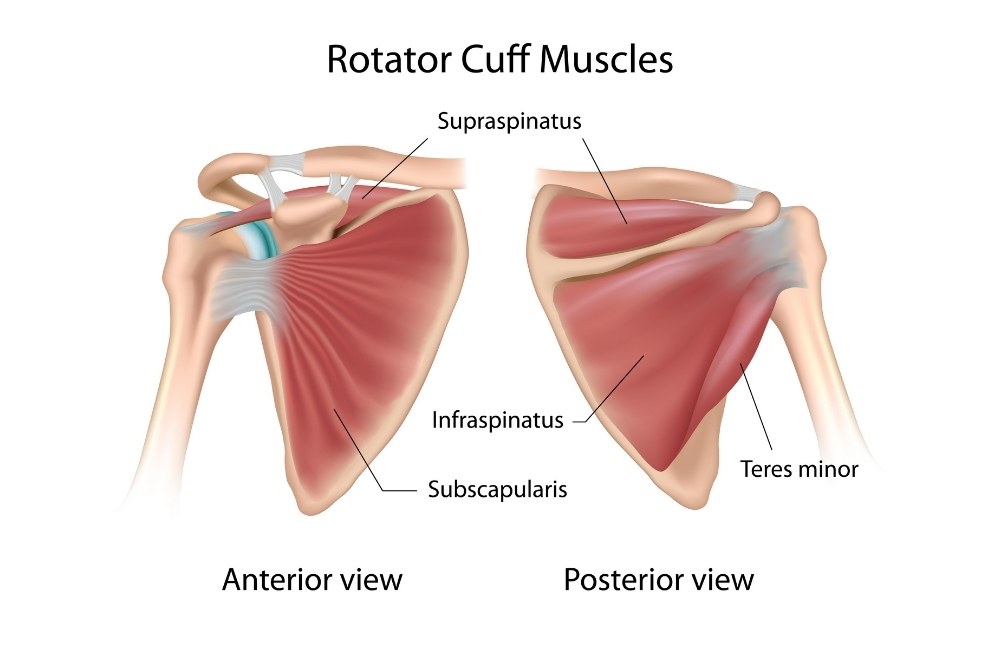
So, what exactly is the rotator cuff?
The rotator cuff is a group of 4 muscles (and their associated tendons) that provide stability and mobility for the shoulder joint. Specifically, the rotator cuff is made up of:
- The supraspinatus. Of all the rotator cuff tendons, this is the one that is most frequently injured. The supraspinatus serves to initiate abduction (moving the arm away from the body) and also provides some rotational movement for the shoulder.
- The infraspinatus. The infraspinatus, located in the back of the shoulder, acts to rotate the shoulder outward (externally).
- The teres minor. Working in tandem with the infraspinatus, the teres minor rotates the shoulder outward (externally).
- The subscapularis. The subscapularis stands in opposition to the infraspinatus and teres minor. It acts as the major inward (internal) rotator of the rotator cuff group.
As you can see, each of these muscles performs a specific function for the shoulder.
However, it’s important to recognize that these muscles also act synergistically with one another. The rotator cuff as a whole provides stability to the shoulder joint during any arm movements.
What Leads to a Rotator Cuff Tear?
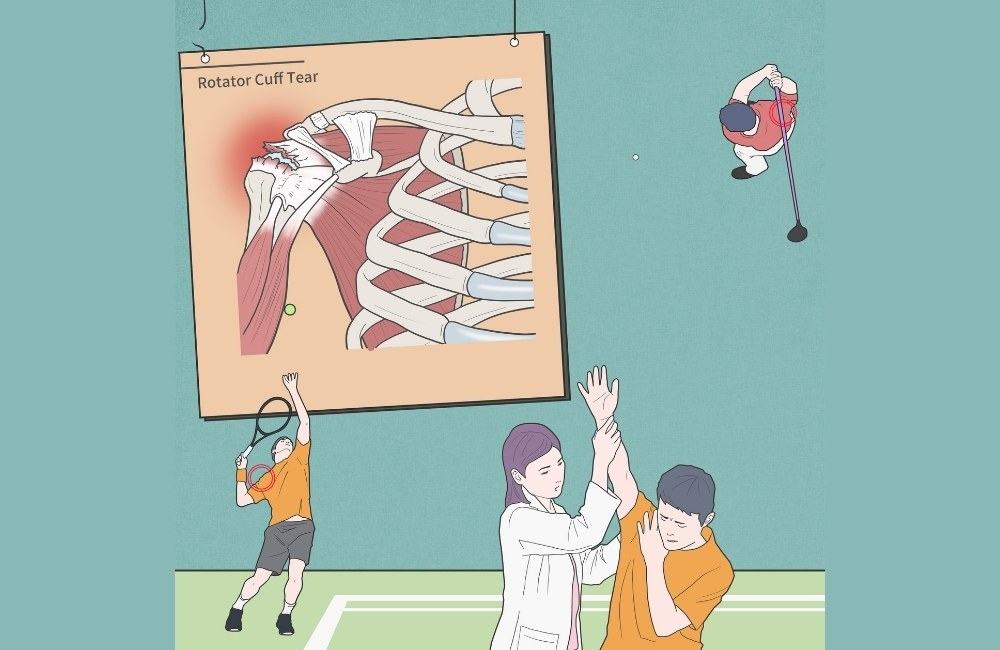
With how common rotator cuff tears are today, it’s important to understand what specifically causes this injury so that we can all work to keep our shoulders healthy.
In nearly all cases, rotator cuff tears are caused by repetitive strain. In other situations, rotator cuff tendons/muscles can be torn due to trauma.
That being said, rotator cuff injuries are more likely to occur when a person:
- Maintains poor posture.
- Uses their shoulders incorrectly for daily tasks and exercises.
Poor posture, in this context, primarily refers to rounded shoulders. When one’s shoulders are rounded forward, the space beneath the acromion (a small bone in the shoulder) is reduced.
Within this space lies the supraspinatus. If there is less space available for the supraspinatus, this tendon will often rub against the nearby bone surfaces.
As a result, the tendon wears down and can start to tear.
Similarly, if someone uses their shoulders constantly, with poor form, they are likely to put too much stress on the rotator cuff tendons.
This can lead to considerable strain on the rotator cuff tendons and an eventual RTC tear.
Rotator Cuff Exercises for Injury
You may be wondering why exercise is an effective treatment option for rotator cuff injuries or tears. After all, when a tissue is injured, isn’t rest the best way to allow it to recover?
Well, yes and no.
It’s true that injured areas benefit from sufficient rest time. That being said, recovery can also be aided by appropriate exercises used during the healing process.
Furthermore, exercises for other areas of the body, such as “the core” can contribute to healthy shoulders as well. This is because core exercises lead to a more stable trunk. In turn, a stable trunk can allow for “cleaner” shoulder and upper extremity movement.
5 Rotator Cuff Exercises
Now, without further ado, I’ll review some of my favorite exercises to help rehab and strengthen the rotator cuff.
1. Dumbbell Rows (Use a Light Dumbbell)
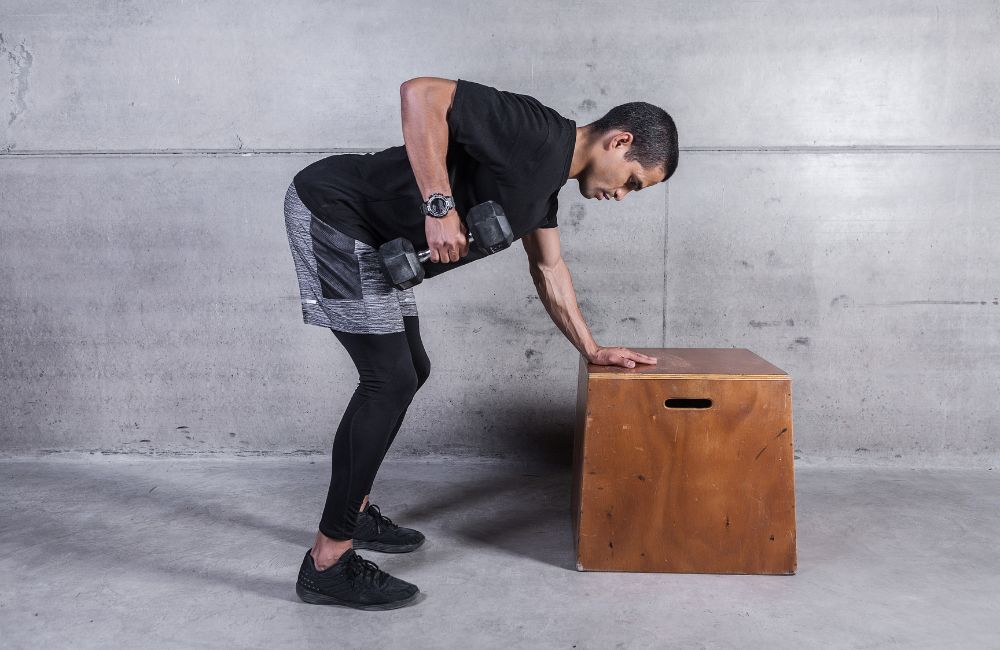
Rows come in many shapes and sizes. This exercise can be performed with barbells, dumbbells, bands, kettlebells, and other tools.
But no matter what position the exercise is performed in, or what equipment is used, rows lead to stronger back, biceps, and shoulder muscles.
For our purposes, I will describe the dumbbell bent-over row.
How to Perform
- Stand at the end of a bench, with a dumbbell in your left hand.
- Bending at the waist, place your right hand on the bench for support.
- At this point, your trunk should be relatively parallel with the floor.
- Start with the dumbbell hanging straight down towards the floor.
- Slowly, pull the weight up to the left side of your chest/trunk.
- During the movement, you should aim to squeeze your left shoulder blade inward, toward your spine.
- Next, slowly reverse the movement, lowering the weight back down to the starting position.
- Repeat the movement for 10-12 repetitions on both sides, for 3-5 sets, 2-3 times a week.
2. Prone Reverse Fly (Use Light Dumbbells)
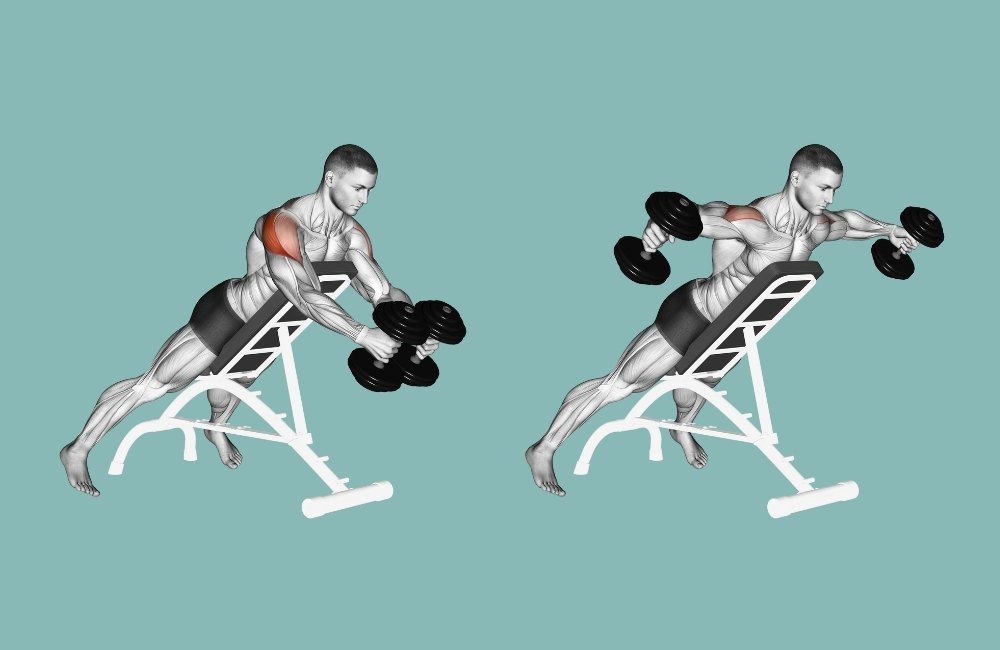
Lying on one’s stomach can be very uncomfortable for many people. If this is the case for you, you can easily modify this exercise by performing it in standing with a resistance band.
If you’re comfortable with lying in prone, you can perform the exercise (described below) with dumbbells.
How to Perform
- Holding a light dumbbell in each hand, lie down on your stomach on a bench.
- Allow the weights to hang down towards the floor to start.
- Slowly, by squeezing your shoulder blades together, raise the weights toward the ceiling.
- Then, reverse the movement by allowing the weights to slowly return to the starting position.
- Complete 10-12 repetitions, for 3-5 sets, 2-3 times a week.
3. Banded Shoulder Flexion
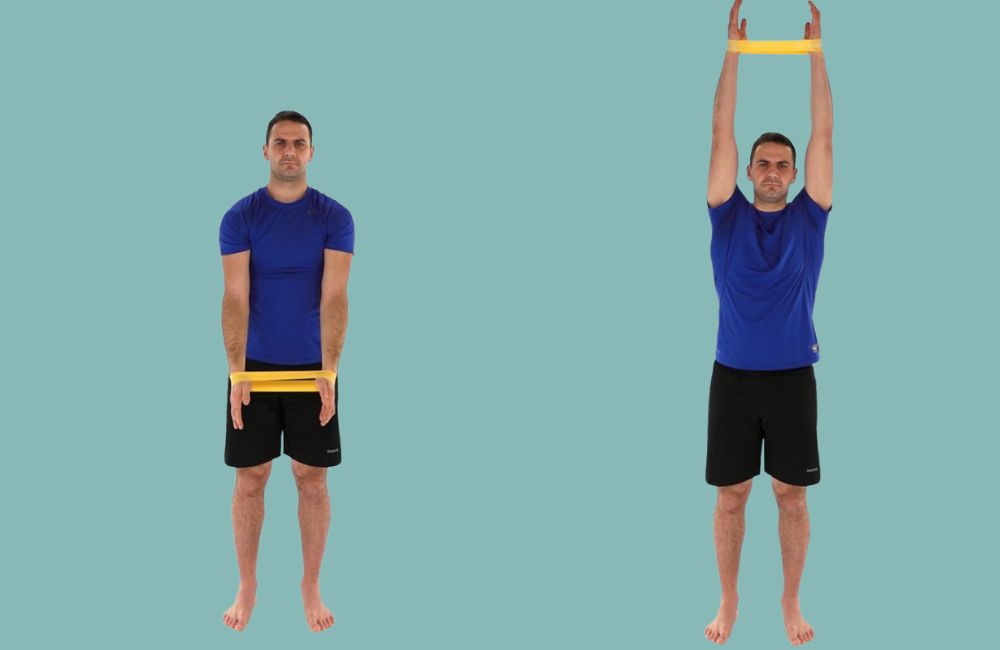
Flexion is one of the primary motions of the shoulder joint. When the scapular stabilizers are not active during shoulder flexion, the rotator cuff is at higher risk for injury.
By placing a looped band around the hands, the scapular stabilizers are cued to be more active throughout the movement.
How to Perform
- Begin in standing, with a looped band wrapped around your wrists (or with one end in each hand) and your arms at your sides.
- Put some tension through the band by pulling outward in opposite directions.
- As you pull outward, simultaneously raise your arms up above your head.
- While keeping tension on the band, lower your arms back down to the starting position to complete the movement.
- Perform 10-12 repetitions for 3-5 sets, 2-3 times a week.
4. Banded Punches with Rotation
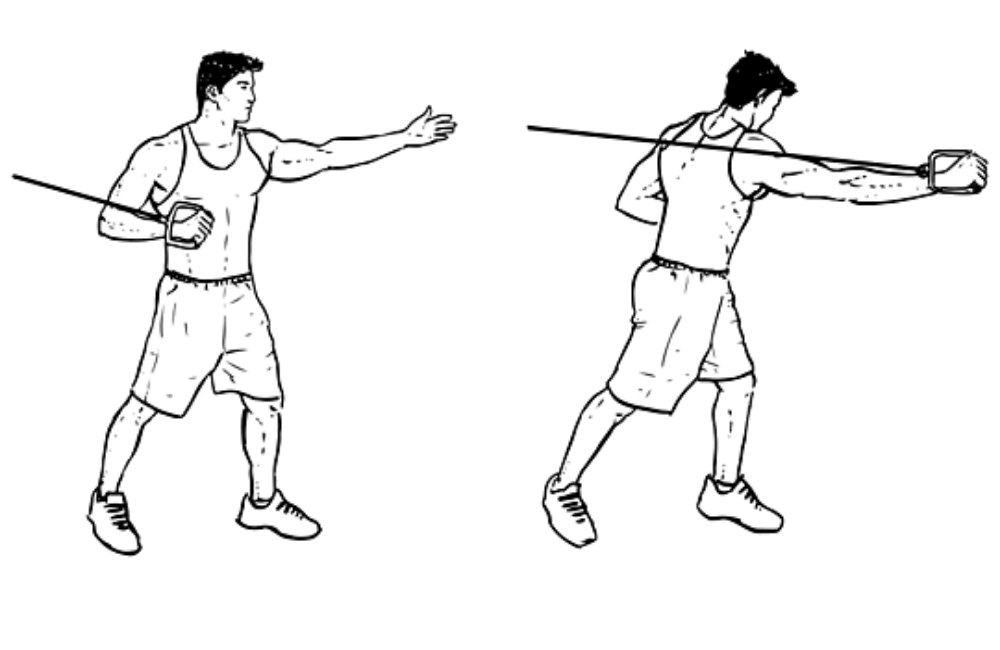
Boxing is one of the oldest sports known to man. Back before we had football, soccer, baseball, and all of the other popular modern sports, we had wrestling and boxing.
For this reason, the punching motion is one that is very natural for our shoulders. Furthermore, by practicing this motion, we can keep our shoulders and rotator cuffs healthy and strong.
How to Perform
- Secure a band to a stable point at roughly shoulder height.
- Grasp the band in your right hand, facing away from where the band is tied.
- Place your left foot slightly in front of your right foot with your feet spread about hip-width apart.
- Shift your weight forward as you simultaneously extend, or punch, your right arm out in front of you.
- At the same time, aim to slightly rotate your trunk to the left.
- Next, reverse all of these motions to return to the starting position.
- Complete 10-12 reps on both sides, for 3-5 sets, 2-3 times per week.
5. Standing W’s with Band
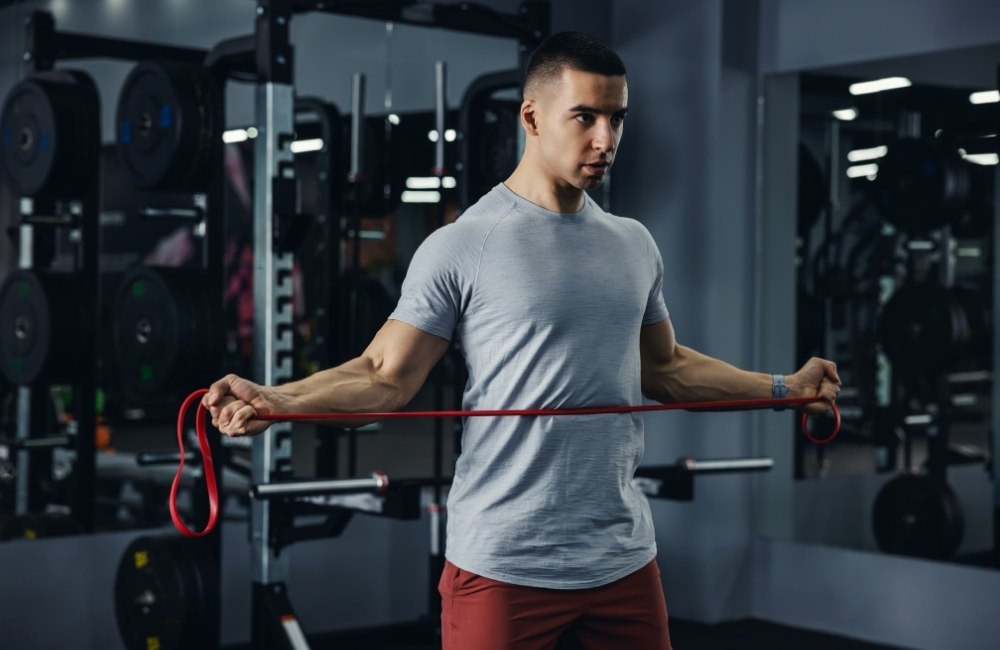
There are many great shoulder exercises named after letters of the alphabet. For example, there are y’s, t’s, i’s, and a’s, to name a few. But the king of all is the W!
How to Perform
- Secure a band to a stable point slightly lower than shoulder height, if possible.
- Holding the band in both hands, rotate your arms backward, so that your hands are at shoulder height and your elbows are down by your ribs.
- At this point, a view from behind would reveal the rough shape of a W made by your arms.
- Pull backward slightly by pinching the shoulder blades together.
- Then, slowly return to the starting position to complete the rep.
- Complete 10-12 repetitions, for 3-5 sets, 2-3 times a week.
Final Thoughts
The rotator cuff is a vulnerable area of the shoulder. Luckily, by strengthening muscles throughout the body, you can reduce the chances of suffering a rotator cuff injury.
Furthermore, many of these exercises can help you rehab your shoulder after you’ve sustained an injury to this area.
Try these moves out and see what you think!

